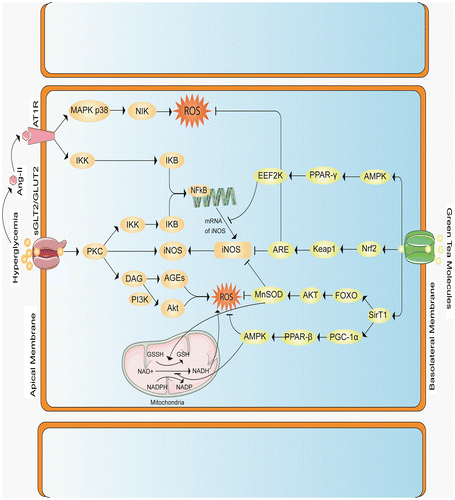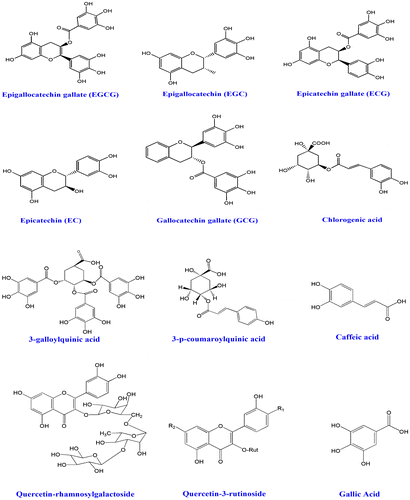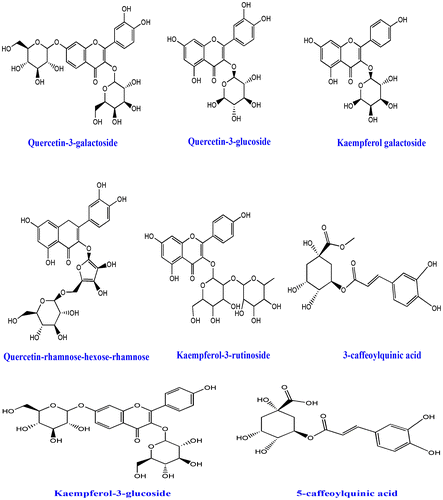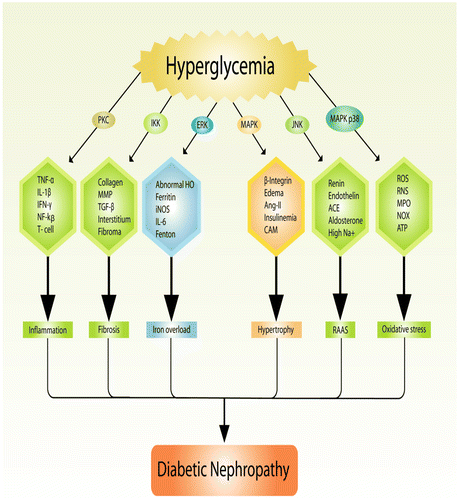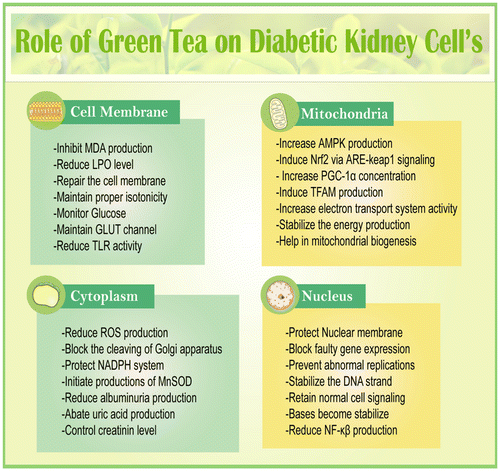Figures & data
Figure 1. Histology represents kidney dysfunctions induced by Alloxan. (A) Which was stained by Hematoxylene and Eosin shows various inflammatory components infiltration, most of the glomerulas have been destroyed by diabetes, (B) which was stained using sirius red and picric acid shows collagen deposition (red parts), and (C) which was stained Prusian blue to determine the iron overload. Inside figures ic—inflammatory cells, fb—fibrosis, and ip—iron pigments. The histology was prepared in our lab.
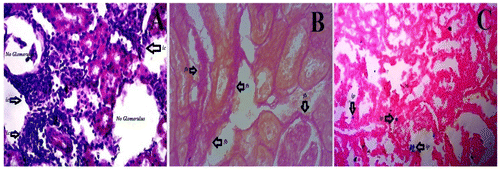
Table 1. Recent protective findings of Green tea on diabetic animal studies
Table 2. Recent protective findings of green tea on diabetic patients through clinical trails
Figure 5. Proposed mechanism explained that, Hyperglycemia induces ROS in numerous ways, such as by activating Mitochondria, or by increasing the accumulation of Transforming Growth Factor Beta (TGF-β), or by triggering protein kinase C (PKC), it also enhances the accumulation of tumor necrosis factor alpha (TNF-α) and up regulates angiotensin-2 production. (1) Inside the mitochondria, hyperglycemia causes electron imbalance which converts oxygen molecule to a reactive one. (2) TGF-β generates ROS via PI3K-Smad2/3 pathway. (3) Activation of PKC by high level of glucose causes formation of ROS via different ways, PKC also possess interleukin 6, which regulates iNOS that is directly involved in the generation of ROS, PKC itself can help in the formation of iNOS directly; PKC causes activation of nuclear factor κβ via IKK-IKB pathway. (4) In addition, hyperglycemia can cause accumulation of TNF-α adjacent the cell membrane, which binds TNF-α receptor that further activates NF-κβ inside the DNA to produce iNOS gene that ultimately generates ROS. (5) Higher glucose level may facilitate the production of Angiotensin-II by Renin-Angiotensin-Aldosterone system, Ang-II binds with Ang-II Type 1 receptor(AT1R), which causes accumulation of ROS via MAPK p38- NIK (NF-κβ inducing kinase) pathway which further activates NF-κβ via IKK-IKB pathway. Green tea flavonoids and polyphenols block the activation/accumulation/generation of ROS by enhancing 5’ AMP-activated protein kinase (AMPK), nuclear factor-erythroid-2-related factor 2 (Nrf2) and Sirtuin-1 (Sirt1). (1) AMPK generally activates both Nrf2 and Sirt1, it further inhibits the expression of iNOS through Peroxisome proliferator-activated receptor gamma (PPAR-γ) in Eukaryotic elongation factor-2 kinase (EEF-2K) pathway, AMPK may also nullify the effect of TNF-α and PKC. (2) Green tea polyphenols and flavonoids induce Nrf2 which blocks both iNOS production and ROS accumulation by activating Keap1-ARE (antioxidant-responsive element) signaling. (3) Sirt1 up regulates Mn superoxide dismutase (MnSOD) production via Forkhead box O3 FOXO3-AKT (Protein kinase) pathway which prevents ROS generation, furthermore Sirt1 inhibits TNF-α and TGF-β by producing PGC-1α (Peroxisome proliferator-activated receptor gamma co-activator 1-alpha)—PPARβ (peroxisome proliferator-activated receptors-β).
